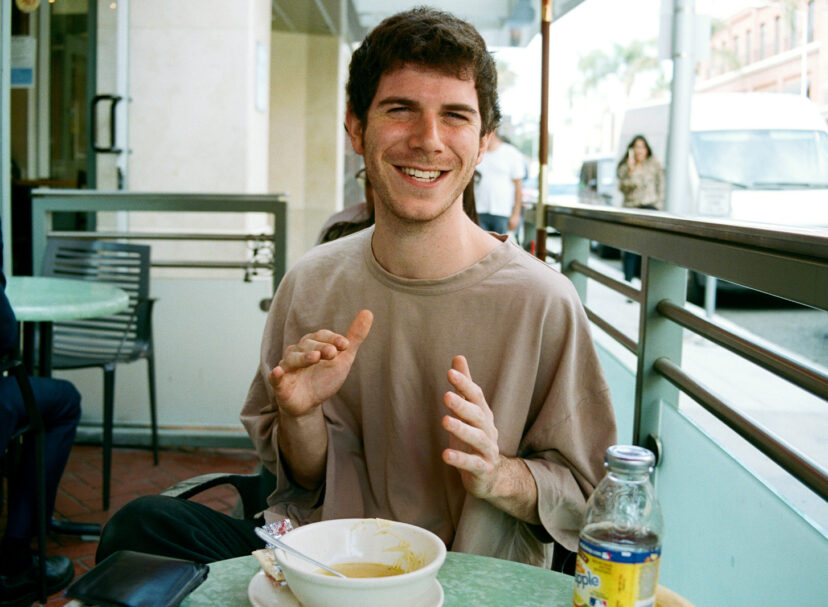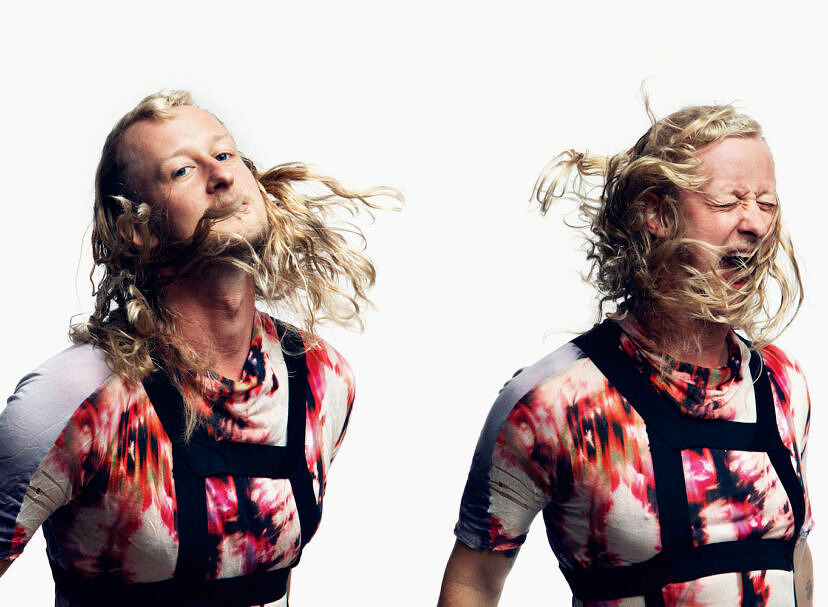Text And Interview: Alec Coiro
Photos: Olivia Locher
Liz Wendelbo and Sean Macbride together with video director Scott Kiernan tell us about their second video collaboration. This time it’s for “Marble” from the new Xeno and Oaklander album Topiary. Scott Kiernan, who you may be familiar with from his work with ESP TV, helps Xeno and Oaklander expose the machinery of production that goes into the creation of a music video. The video itself takes place in what seems like a television production studio of an undetermined time and opaque place. The cues given to ground us also mislead us, and the format shifts in order to match the form of the music.
Have you worked with Scott Kiernan before? I was struck by how well his aesthetic approach to technology seemingly matches yours. Is that typical of his work or did you guys tailor the video to match your aesthetic?
Liz Wendelbo: We did a video a few years back in 2012 with Scott Kiernan’s art collective ESP TV, which he runs with Victoria Keddie – it was a taped TV recording (ESP TV #14) in an art studio somewhere in Brooklyn, using all analogue video gear and live editing. It seemed to make sense for us because Xeno & Oaklander as a project was always fascinated with the language of performance and the relation between live set-up and equipment. We’ve always been a fan of Bertolt Brecht, and his theory of alienation in performance – and that’s what we were looking for in a video: revealing devices, showing the architecture, exposing the structure – how things are made. How things collapse and come into shape again.
Sean McBride: That’s how we like to perform our music, what you see is what you get. There’s a transparency to the magic.
The video cuts back and forth between a few different video platforms. Was the video made using multiple types of video cameras, or was this a post-production effect? I noticed there were four different camera operators involved?
Scott Kiernan: We shot in a TV studio and we wired different kinds of cameras into the console. The cameras used were TV studio cameras, such as an Ikegami ITC-70A SD Tube Broadcast Camera from 1979…some footage that looks black and white or pixelated was shot off of the viewfinder of that 70s Ikegami or was rescanned off of an old black and white production monitor called a Video 100.
LW: We also used some HD; it’s sharp and recognizably contemporary; it sets the video into the present.
Finally, thinking about music videos in general, do you have a philosophy or preference in regards to how literally the subject matter of the lyrics matches the story presented in the video?
LW: the idea for the text in the video was to echo my lyrics, like cue sheets on teleprompters. We wanted to use the language of the television set, and mess with it somewhat. So the text that appears on the screen is slightly off, on purpose: they are puns, play on words, based on the original lyrics of the song. Also we tend to give titles to songs that are not what the song is about, so in this case the song is called Marble, but it is about a mythical figure and place called Monaco: she’s all at once. These kinds of displacements are a way for us to trigger people’s imagination, with the intention to create moments of poetry and glamour, the stuff of fantasy.

